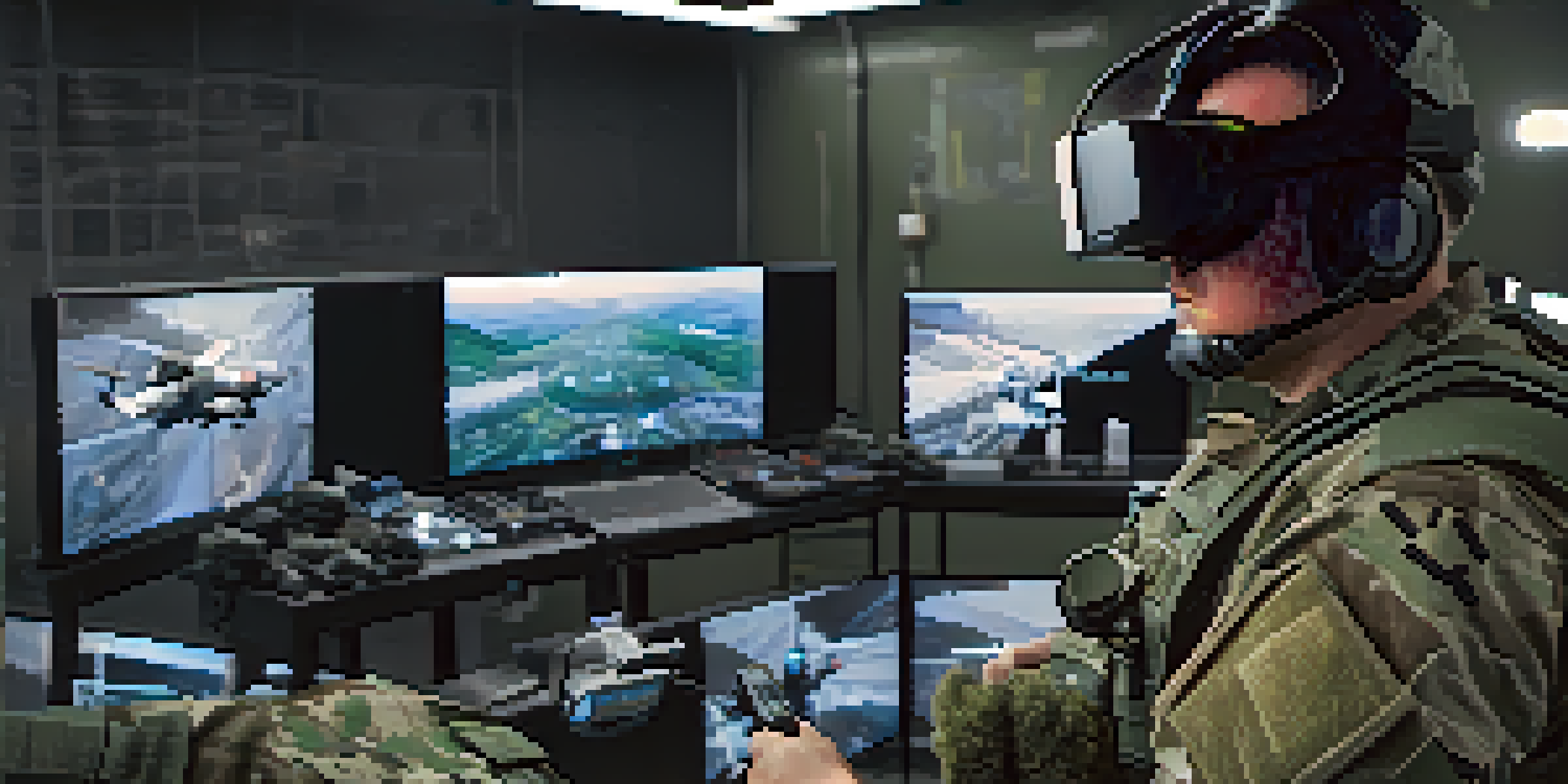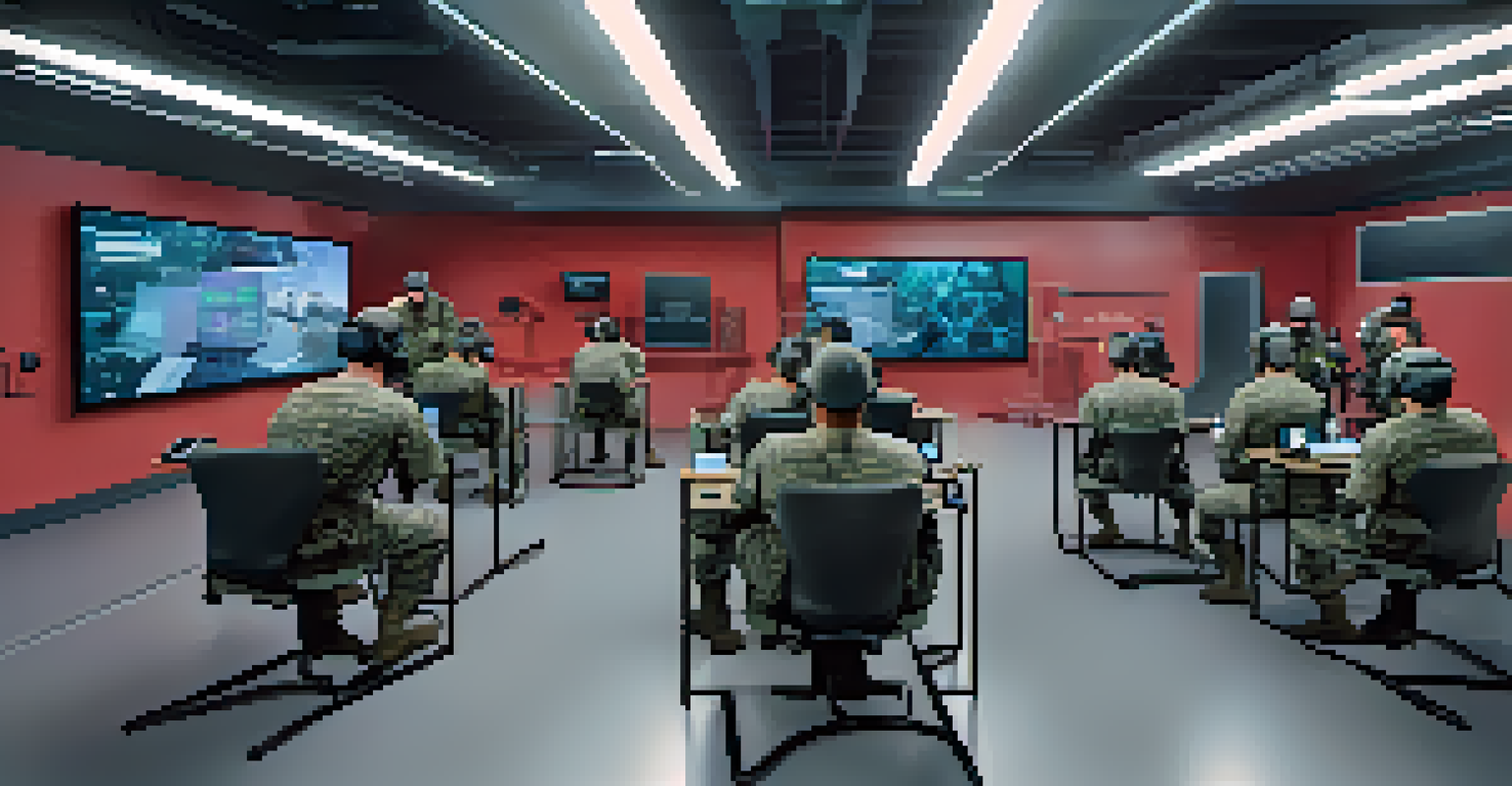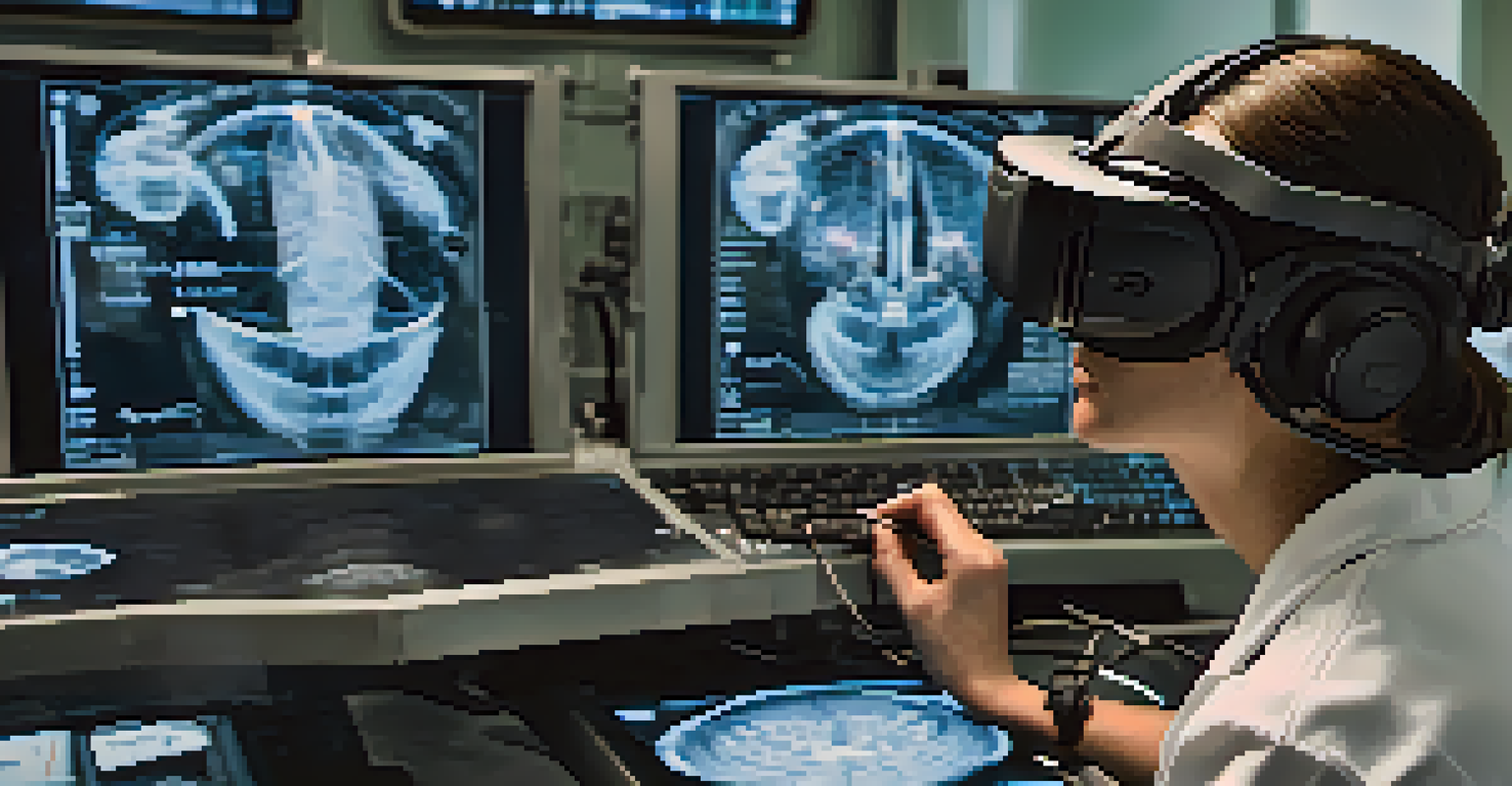Virtual Reality for Military Medical Training: A New Frontier

Understanding Virtual Reality in Military Contexts
Virtual reality (VR) is a technology that immerses users in a simulated environment, making it feel as though they are actually present in that space. In military settings, this immersive experience can be particularly beneficial for medical training, allowing personnel to practice critical skills without the pressure of real-life consequences. Imagine a soldier honing their surgical techniques on a lifelike virtual patient; this scenario highlights the potential of VR to create realistic training environments.
Virtual reality is the first step in a world where we can be anywhere and do anything.
The key advantage of VR is its ability to replicate high-stress situations that military medics may face in the field. For example, a VR simulation can mimic the chaos of a battlefield, complete with sounds and visual distractions, helping trainees develop their skills under pressure. This type of training prepares them not only to perform medical procedures but also to make quick decisions when time is of the essence.
Moreover, VR offers opportunities for repeated practice, allowing military medics to refine their skills continually. Unlike traditional methods, where resources may be limited, VR can provide endless scenarios, ensuring that trainees are well-prepared for any situation they might encounter. This level of preparedness is crucial for saving lives in the field.
Enhancing Learning Outcomes with Immersive Technology
One of the most exciting aspects of using VR in military medical training is its impact on learning outcomes. Research has shown that immersive learning experiences can significantly improve retention and understanding of complex medical procedures. When trainees engage in realistic simulations, they are more likely to remember what they've learned and apply it effectively in real-world situations.

Furthermore, VR allows for immediate feedback, which is essential for mastering medical techniques. After completing a simulation, trainees can receive detailed performance evaluations, helping them identify areas for improvement. This feedback loop fosters a growth mindset, encouraging medics to continually seek enhancement in their skills.
VR Enhances Military Medical Training
Virtual reality provides immersive training experiences that improve skill retention and decision-making under pressure for military medics.
In addition to technical skills, VR training helps develop soft skills such as communication and teamwork. By participating in group simulations, military medics learn to collaborate effectively under pressure, which is vital in emergency situations. This holistic approach to training prepares them not just as individual practitioners but as part of a cohesive medical team.
Cost Efficiency of VR Training Solutions
Implementing VR technology in military medical training can also lead to significant cost savings. Traditional training methods often require expensive equipment and resources, from anatomical models to live simulations. In contrast, once a VR system is set up, the costs associated with ongoing training can be reduced, as simulations can be run multiple times without additional expenses.
The future of education is not about teaching kids to memorize facts, but about teaching them to learn and adapt.
Additionally, VR reduces the need for live training scenarios that sometimes involve risks to both the trainees and the patients. By utilizing virtual scenarios, military organizations can minimize potential liabilities and ensure a safer training environment. This shift not only protects individuals but also optimizes resource allocation for training purposes.
As military budgets continue to face scrutiny, the cost-effectiveness of VR training solutions makes them an attractive option for decision-makers. Investing in VR technology can yield long-term savings while enhancing the quality and efficiency of medical training.
Real-World Applications of VR in Military Medicine
Several military organizations around the world are already harnessing the power of VR for medical training. For instance, the U.S. Army has developed immersive training programs that allow medics to practice advanced life-saving skills in simulated combat situations. These programs are designed to replicate the stress and urgency of real-life scenarios, providing trainees with invaluable experience.
Beyond just combat situations, VR can also be used for training in non-combat environments, such as disaster response or humanitarian missions. Medics can practice triaging patients and performing emergency procedures in various scenarios, ensuring they are well-prepared for any situation that may arise. This versatility makes VR an essential tool in a military medic's training arsenal.
Cost Savings with VR Solutions
Implementing VR technology in military training can significantly reduce costs associated with traditional methods while enhancing training effectiveness.
As technology continues to evolve, we can expect to see even more innovative applications of VR in military medicine. From virtual wound care to advanced surgical procedures, the possibilities are vast, promising to revolutionize how military personnel are trained for medical emergencies.
Overcoming Challenges in VR Implementation
While the benefits of virtual reality in military medical training are clear, there are challenges to consider in its implementation. One significant hurdle is the initial cost of acquiring and setting up VR technology. Although it may lead to long-term savings, the upfront investment can be daunting for some military organizations.
Additionally, there is a learning curve associated with integrating VR into existing training programs. Medical instructors and trainees alike may require time and training to become familiar with the technology and its applications. This transition phase can be a barrier, but with proper support and resources, it can be navigated successfully.
Lastly, ensuring that VR simulations accurately reflect real-world situations is critical. Developers must work closely with medical professionals to create realistic scenarios that effectively prepare military medics for the challenges they will face. Continuous updates and improvements to the simulations are necessary to keep pace with advancements in medical knowledge and battlefield conditions.
The Future of VR in Military Medical Training
Looking ahead, the future of virtual reality in military medical training appears bright. As technology advances and becomes more accessible, we can expect to see broader adoption across various military branches. This trend may lead to new training methodologies that prioritize immersive experiences and hands-on learning.
Moreover, the integration of artificial intelligence (AI) with VR can enhance training further. AI can analyze trainee performance in real time, providing tailored feedback and adjusting scenarios based on individual needs. This personalized approach could significantly improve learning outcomes and prepare military medics more effectively.
Future of VR in Military Medicine
As technology advances, the integration of VR and AI is expected to revolutionize military medical training, ensuring personnel are better prepared for complex scenarios.
As military operations become increasingly complex, the need for well-trained medical personnel will only grow. Embracing VR technology not only equips military medics with essential skills but also ensures they can adapt to the ever-changing landscape of battlefield medicine.
Conclusion: Embracing Innovation for Better Outcomes
In conclusion, virtual reality represents a transformative shift in military medical training, offering immersive and effective learning experiences. By simulating real-world scenarios, VR prepares military medics to respond swiftly and effectively in emergencies, ultimately saving lives. The potential for cost savings, improved learning outcomes, and enhanced collaboration further underscores the value of this innovative technology.
As military organizations continue to explore the possibilities of VR, overcoming implementation challenges will be essential for maximizing its benefits. With ongoing support, investment, and collaboration, VR can become a cornerstone of military medical training programs worldwide.

Ultimately, embracing VR technology not only reflects a commitment to innovation but also ensures that military medics are equipped with the skills and knowledge necessary to meet the demands of their vital roles in protecting and serving their communities.